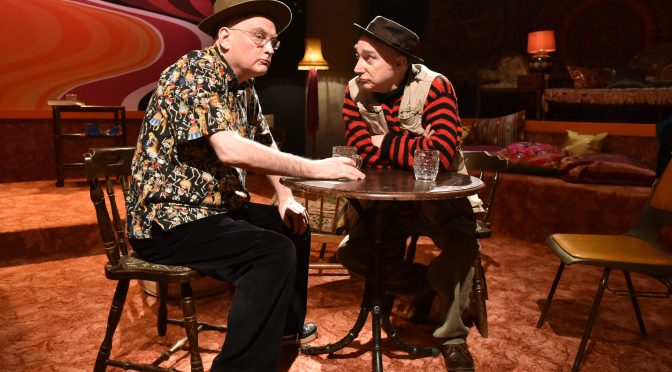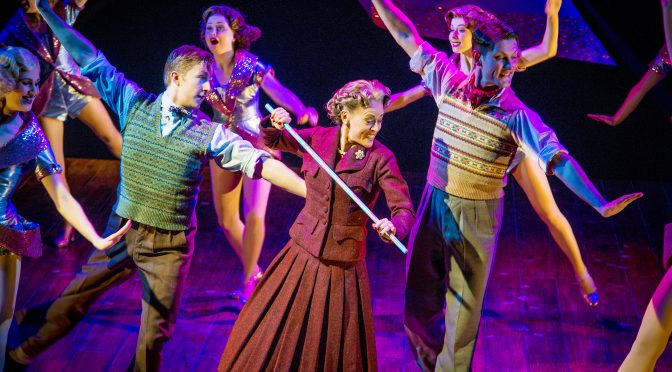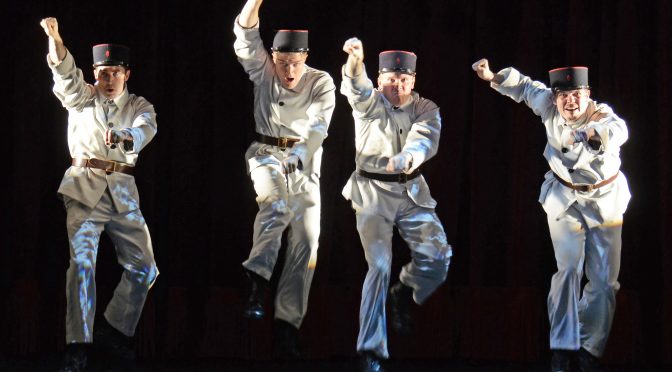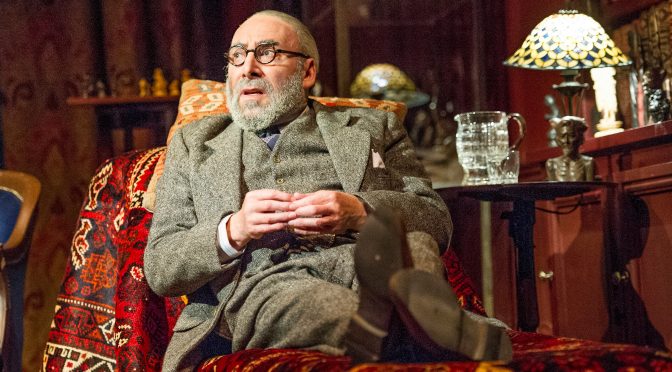This tribute piece to the multi-talented Ken Campbell, who died ten years ago, comes from the pen of his old friend the playwright Terry Johnson. Campbell is clearly much missed and this celebratory evening explains why: originality, intelligence and independence made him a presence in the theatre, while a maverick sense of humour made his company appealing.
A skilled impersonator, Jeremy Stockwell takes the title role, and the show is very much for those who will recognise his Ken straight away. But as he strides through the audience, with Tim Shortall’s design recreating late 1970s hippydom, his confidence and enthusiasm are highly entertaining. And there’s a touch of insanity: old-fashioned smut alongside experimental avant-garde makes for an edgy combination that could have been elaborated on. Campbell’s theatre was a long time before ‘safe spaces’, of course, but questioning some of his actions might make the show feel less cliquey. Instead, the atmosphere is convivial-clubby, if you are being harsh. Stockwell knows how to work a crowd, but I am just not sure how you’d feel if Ken’s wasn’t a club you wanted to belong to.
Johnson takes to the stage as himself, showing a modesty and honesty as impressive as his erudition. The finale, recounting Campbell’s funeral, is vividly written. The impact Campbell had on Johnson’s life, imbued with a confessional air and a great deal of humour, is moving and intensely personal. This isn’t your standard biography. Described as a “seeker” with a perpetually open mind, it’s Campbell’s antics, the kind of shows he put on, and the tricks he played that make him memorable. Indeed, some of it is so far-fetched that a writer wouldn’t dare to make it up. And it’s interesting to journey back to a time when theatre was so different: especially in an exciting venue that’s announced such a forward-thinking season for 2018. After all, who doesn’t want to learn about the holder of the world record for the longest ever play, or the man who took it upon himself to rename the RSC? This “Essex estuary incarnation of Pan” gets a fond farewell that is suitably idiosyncratic.
Until 24 February 2018
Photo by Robert Day




